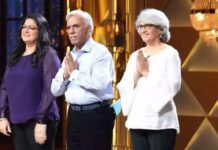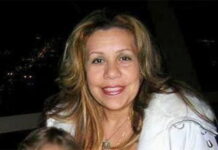Mohammed Rafi Biography: Mohammed Rafi, one of the greatest playback singers born in India, was a genius when it came tao a vriety of musical genres. This great singer possessed the ideal combination of melody, emotions, and vitality, which resulted in countless soulful songs. Muhammad Rafi gave each song the treatment it merited, whether it was the classically influenced songs of Baiju Bawara or the foot-tapping songs of Kashmir Ki Kali. His contribution to the Hindi film industry has been outstanding, and perhaps no singer before Mohamed Rafi has so successfully captured the affections of fans.
Mohammed Rafi Biography
Early years
The family lineage of Rafi.
Mohammed Rafi was the second oldest of six siblings born into a Punjabi Jat Muslim family to Allah Rakhi and Haji Ali Mohammad. The family was originally from Kotla Sultan Singh, a village in the Amritsar division of Punjab, India, near the city of Majitha.Rafi, whose nickname was Pheeko, began singing by emulating the chants of a wandering fakir in his native village Kotla Sultan Singh. In 1935, Rafi’s father relocated to Lahore, where he opened a barbershop in Noor Mohalla, Bhati Gate. Rafi was instructed by Ustad Abdul Wahid Khan, Pandit Jiwan Lal Mattoo, and Firoze Nizami in classical music. At the age of 13, he gave his first public performance in Lahore alongside K. L. Saigal. Rafi made his debut as a playback vocalist in Lahore in 1941 with the duet “Soniye Nee, Heeriye Nee” with Zeenat Begum in the 1944 Punjabi film Gul Baloch, under the direction of music director Shyam Sunder. In the same year, All India Radio Lahore station invited Rafi to sing for them.
In 1945, he made his film debut with Gaon Ki Gori.
Career
In 1944, Mohammed Rafi relocated to Bombay. Several producers and directors were introduced to him by his associate Tanvir Naqvi. He finally received his big break in 1944 when he recorded his first song, “Ai Dil Ho Kaabu Mein,” for the film Gaon KI Gori, which was released the following year. In the meantime, Mohammed Rafi began performing for renowned music directors such as Naushad and Shyam Sunder. His collaboration with Naushad persisted throughout the 1950s and 1960s. They collaborated on films such as Pehle Aap (1944), Anmol Ghadi (1946), Shahjahan (1946), Dulari (1949), Deedar (1951), Deewana (1952), and UranKhatola (1955).Rafi saab rose to fame following his performance in the film Baiju Bawra, which was directed by Naushaad. The semi-classical bhajan ‘Man Tarpat Hain Hari Darshan Ko Aaj’ from the film demonstrated Mohammed Rafi’s singing ability to the world. In 1960, the two collaborated on the magnum opus Mughal-e-Azam.
Throughout the 1950s, Rafi saab was the voice behind prominent actor Dev Anand. He provided the playback for films starring Dev Anandji, including Kaala Paani (1958), Bambai Ka Babu (1960), Nau Do Gyarah (1957), Tere Ghar Ke Samne (1963), and Guide (1965). During the same period, he worked on Sachin Dev Burman’s musical compositions. The trio of Dev, Rafi, and Burman provided the Hindi film industry with some genuinely unforgettable songs, such as “Diwana Hua Badal,” “Dilka Bhanwar Kare Pukar,” “Achhaji main hari” with Asha Bhosle, and “Khoya Khoya Chand.” Mohammed Rafi and S.D. Burman repeatedly created enchantment throughout the 1950s, 1960s, and 1970s. Almost all of Burman’s prominent men, including Dev Anand, Guru Dutt, Rajesh Khanna, and Amitabh Bachchan, were sung by Rafi saab. The voice of Rafi Saab serenaded the nation with romantic songs such as “Teri Bindiya Re” and “Gun Gun Rahe Hai.”
Rafi collaborated with legendary music director O. P. Nayyar on multiple occasions, and Mr. Nayyar stated that he would not have attained the pinnacle of success without Mohammed Rafi. Multiple successful ventures, such as NayaDaur (1957), Tumsa Nahin Dekha (1964), and Kashmir Ki Kali (1964), featured the voices of Mohammed Rafi and Asha Bhonsle. Songs such as “Ude Jab Jab Zulfein Teri,” “Tumsa Nahin Dekha,” and “Deewana Hua Badal” established a permanent place in the affections of the Indian audience.
Another of Mohammed Rafi’s wildly successful partnerships was with the music director duo Shankar-Jaikishan. Three of Mohammed Rafi’s six Filmfare Awards for Best Playback Singer came from their collaboration: ‘Teri Pyari Pyar iSurat Ho’ from the 1961 film Sasural, ‘Baharo Phool Barsao’ from the 1966 film Sooraj, and ‘Dil Ke Jharokhe Mein’ from the 1968 film Bhrahmachari. Most of the Shankar-Jaikishan songs sung by Mohammed Rafi were written by the renowned lyricist Shailendra, and this musical combination created unforgettable songs such as “Laal Chhadi Maidan Khadi” from the 1965 film Jaanwar and “Main Gaon Tum So Jao” from the 1968 film Brahmachari. Shankar Jaikishan’s creations for ShammiKapoor films Junglee (1961), Professor (1962), An Evening in Paris (1967) and Brahmachari (1968) witnessed iconic genre breaking creations like ‘Chahe Koi Mujhe Junglee Kahe’, where Rafi Saab let himself loose to be in congruency with Shammi Kapoor’s rakish and boisterous Playboy image or ‘Awaz Deke Humein Tum Bulao’ that appealed to the inner romantics of all classes. Rafi Saab and Shankar Jaikishan recorded a staggering 341 compositions, 216 of which were solos.
Another successful music director duo, Laxmikant Pyarelal and Mohammed Rafi, produced excellent work. Their collaboration began with the 1963 film Parashmani and continued through such illustrious works as Dosti (1964), Mere Humdum Mere Dost (1968), Khilona (1970), and Anari (1975). Together, they recorded 369 songs, the maximum number of songs ever recorded by Rafi Saab for a music director. They created tunes such as “Na Ja Kahinab Na Ja,” “Patthar K Sanam,” “Yeh Reshmi Zulfein,” “Koi Nazrana Lekar Aya Hu,” and “Aye Din Bahar Ke.” 1964 Filmfare Award winner for the single “Chahoonga Main Tujhe Sajjh Savere” from the film Dosti.
Rafi Saab collaborated with S.D. Burman and his sons Rahul Dev Burman or R.D. Burman or Pancham. In films such as Teesri Manzil (1966), Caravan (1971), and Shaan (1980), they collaborated. Rafi Saab sang incredibly popular melodies such as ‘O Haseena Zulfon wali’, ‘O mere Sona re Sona re Sona’, ‘Yamma Yamma’, ‘Chadti Jawani’, and ‘Maine Poocha Chand Se’. Rafi Saab appeared to be equally at ease with both genres, as the tunes ranged from intensely energetic to mellowly romantic.
Awards and Accolades
Throughout the years, Rafi Saab’s illustrious musical career received numerous national and international accolades. He was nominated for 21 Filmfare Awards for playback vocals, winning six times. In 1977, he also received the National Film Award. In addition, he won three Bengali Film Journalists’ Awards in 1957, 1965, and 1966. In 1967, he was awarded the Padma Shri by the Government of India.
Controversy
Despite being a gentleman throughout his entire career, Rafi was involved in two separate controversies with fellow vocalist Lata Mangeshkar. First, in 1962, the two had a disagreement over the royalty demands of playback vocalists. Lataji asserted that playback vocalists are entitled to half of the 5% royalty claimed by the film’s producers for the songs they recorded for the film. She desired Rafi Saab’s support on the matter, but he stated that a singer’s relationship with a song ended when they were paid by the producer. As the project’s financial backer, the financial gains must be returned to the producer, not the singers who were compensated adequately for their labour. Lataji took offence to this and became hostile towards Rafi, ultimately announcing her refusal to collaborate with him. However, the music director Jaikishen mediated a reconciliation between the two, and the duo subsequently collaborated.
The second source of contention arose when the Guinness Book of World Records recognised Lata Mangeshkar as the artist who recorded the most melodies. He sent a letter to the Guinness authorities disputing the claim and asserting that he had performed a greater number of tunes. The Guinness officials did not remove the listing, but they did amend it to include Mohammed Rafi’s name and his argument.
Personal Facts
Bashira Banu was married to Mohammed Rafi, his cousin. However, the marriage endured during the 1947 partition due to political tensions. Bashira Banu refused to travel to India with Rafi Saab after witnessing the riots’ atrocities. She remained in Lahore, which is now located in Pakistan, and their marriage came to an end. Saheed was the couple’s son with his first wife, Bashira. He subsequently wed Bilquis Banu, and they had four children: Nasreen, Khalid, Parveen, and Hamid.




